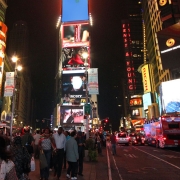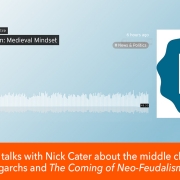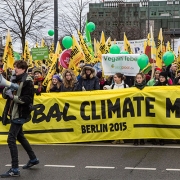The Geography of COVID-19
The ongoing pandemic is reshaping the geography of our planet, helping some areas and hurting others. In the West, the clear winners have been the sprawling suburbs and exurbs, while dense cores have been dealt a powerful blow. The pandemic also has accelerated class differences and inequality, with poor and working class people around the world paying the dearest price. These conclusions are based on data we have repeatedly updated. Despite some variations, our earlier conclusions hold up: the virus wreaked the most havoc in areas of high urban density. This first became evident in the alarming pre-lockdown fatalities that occurred in New York City and the suburban commuting shed from which many of the employees in the huge Manhattan business district are drawn. Similar patterns have been seen in Europe and Asia as well.
The problem is not density per se but rather the severe overcrowding associated with poverty in high density areas. Overcrowded physical proximity often includes insufficiently ventilated spaces such as crowded public transit, elevators, and employment locations, especially high-rise buildings, which often have windows that cannot be opened. Overcrowded bars, restaurants, and other retail establishments are also a part of the problem. Professor Shlomo Angel head of the New York University Urban Expansion Project at the Marron Institute and the NYU Stern Urbanization Project and principal author of A Planet of Cities and the Atlas of Urban Expansion explains:
It is important to increase density literacy among politicians, professionals, and activists to make it clear that the density that contributed to the pandemic, overcrowded multigenerational housing, mass events, crowded transit cars, or crowded bars and restaurants, is not the kind of density we need to increase to make cities more affordable and to combat climate change. The densification we need involves making room in cities, adding floor space so that more people can occupy the same area without overcrowding.
Mixed evidence on lockdowns
Overcrowding intensifies exposure density. Recognizing this, governments imposed lockdowns and social distancing measures intended to reduce crowding and viral transmission. But lockdowns can be effective in some situations and not in others. Social distancing and remote work can readily reduce the exposure density of overcrowded trains, workplaces, elevators, and retail establishments, especially in the densest urban cores. Restaurants and bars were forced to close, and as many employers switched to remote working, fatality rates dropped substantially.
But this approach has exacted a steep cost. In New York, San Francisco, Chicago, and Toronto, suburban rail ridership declined by between 75 and 90 percent compared to the previous year. There has been a precipitous decline in the economies of the central business districts (CBDs) of these metropolitan areas, which have suffered economically more than most of their smaller counterparts. City Journal has reported that, in 2020, “New York City lost 500,000 private-sector jobs. Its office buildings are only 15 percent occupied. Ninety percent of the city’s restaurants failed to pay their December 2020 rent, and 5,000 have shut down altogether. Employment in the city’s arts and entertainment sector has plummeted 66 percent. And, perhaps most alarming: 300,000 New Yorkers from high-income neighborhoods have filed change-of-address forms with the Postal Service.” Rents are now the lowest in a decade.
Much of the employment activity central to modern cities—finance, marketing, technology, media, consulting—has been transferred to the “cloud model” of employment. Even in places like Hong Kong and Tokyo that have avoided the worst of the pandemic, there has been a significant reduction in CBD on-site work as remote work has increased. An ominous sign for the future: considerable evidence that productivity has improved or at least remained the same.
Nevertheless, social distancing and dispersion have proven successful in containing the spread of the virus. Our analysis of county fatality rate data shows that, in April 2020, the fatality rate in the New York combined statistical area (31 economically connected counties) was seven times the national rate. By July 2020, the CSA rate had fallen below the national rate. But the price was empty streets, sidewalks, office buildings, as well as bars and restaurants all essential to maintaining a dynamic city.
The future of cities
How many workers will return to the CBDs remains an open question, but it seems likely to be many fewer than before the pandemic. Even as we write, new lockdown measures are being implemented in Ontario, and it seems fair to ask when lockdowns will be sufficiently relaxed for urban cores to begin operating at their new normal. Downtowns have recovered far less quickly than suburban, exurban, and small towns. City centers in London, Paris, Berlin, Melbourne, Sydney, Milan, and elsewhere have suffered huge physical employment losses and increases in remote work.
Read the rest of this piece at Quillette.
Joel Kotkin is the author of The Coming of Neo-Feudalism: A Warning to the Global Middle Class. He is the Presidential Fellow in Urban Futures at Chapman University and Executive Director for Urban Reform Institute. Learn more at joelkotkin.com and follow him on Twitter @joelkotkin.
Wendell Cox is principal of Demographia, an international public policy firm located in the St. Louis metropolitan area. He is a founding senior fellow at the Urban Reform Institute, Houston, a Senior Fellow with the Frontier Centre for Public Policy in Winnipeg and a member of the Advisory Board of the Center for Demographics and Policy at Chapman University in Orange, California. He has served as a visiting professor at the Conservatoire National des Arts et Metiers in Paris. His principal interests are economics, poverty alleviation, demographics, urban policy and transport. He is co-author of the annual Demographia International Housing Affordability Survey and author of Demographia World Urban Areas.
Homepage photo: Prayitnophotography via Flickr, under CC 2.0 License.






 Gage Skidmore, used under CC 2.0 License
Gage Skidmore, used under CC 2.0 License
